[Right click on images 'open new window to enlarge]
Palm Islands
The Palm islands in Dubai are the three largest artificial islands in the world. They are being constructed by Nakheel Properties, a propearty developer in the United Arab Emirates. The islands are The Palm Jumeirah, The Palm Jebel Ali and The Palm Deira.
The islands were commissioned by Sheikh Mohammed bin Rashid Al Maktoum in order to increase Dubai's tourism. Each settlement will be in the shape of a palm tree, topped with a crescent, and will have a large number of residential, leisure and entertainment centers. The Palm Islands are located off the coast of The United Arab Emirates in the Persian Gulf and will add 520 km of beaches to the city of Dubai.
The first two islands will comprise approximately 100 million cubic meters of rock and sand. Palm Deira will be composed of approximately 1 billion cubic meters of rock and sand. All materials will be quarried in the UAE. Between the three islands there will be over 100 luxury hotels, exclusive residential beachside villas and apartments, marinas, water theme parks, restaurants, shopping malls, sports facilities and health spas.
The creation of The Palm Jumeirah began in June 2001. Shortly after, The Palm Jebel Ali was announced and reclamation work began. In 2004, The Palm Deira, which will be larger in size than Paris, was announced. Palm Jumeirah is currently open for development. Construction will be completed over the next 10-15 years.
Construction
The Palm islands are technically artificial peninsulas constructed of sand dredged from the bottom of the Persian Gulf. The sand is sprayed by the dredging ships, which are guided by GPS, onto the required area in a process known as rainbowing. The outer edge of each Palm's encircling crescent is a large rock breakwater. The breakwater of the Palm Jumeirah has over 7 million tons of rock. Each rock was placed individually by a diver, signed off and given a GPS coordinate.
Palm Jumeirah
The Palm Jumeirah consists of a trunk, a crown with 17 fronds, and a surrounding crescent island that forms an 11 kilometre-long breakwater. The island is 5 kilometers by 5 kilometers, an area larger than 800 American football fields. Each square meter will be sold at around 1 dirham. It will add 78 kilometres to the Dubai coastline. The first phase of development on the Palm Jumeirah will create 4,000 residences with a combination of villas and apartments over the next 3 to 4 years.
Residents will begin moving into their Palm Jumeirah properties by the end of 2006, five years after land reclamation began, according to project developer Nakheel Properties. This will signal the end of phase one of construction, which includes approximately 1,400 villas on 11 of the fronds of the island and roughly 2,500 shoreline apartments in 20 buildings on the east side of the trunk.
Nakheel Properties will mark the arrival of the first residents by bringing one of the world's largest airships to Dubai. It has agreed to a deal with Airship Management Services Inc for a 197 feet long, 250,000 cubic foot Skyship 600 dirigible.
According to Nakheel Properties officials, the process of adding 78 kilometres of beach is under way, while eight of the 32 hotels on The Palm Jumeirah have begun construction, including the Taj Exotica Resort and Spa, which is planned for completion in late 2008 or early 2009. The first phase of Atlantis, The Palm, is scheduled to be completed by December 2008.
The "Golden Mile", the strip of land located along the centre of the trunk overlooking the canal, is set for completion in the first quarter of 2008. Construction has also begun on the Palm Monorail, which will take three years to complete and will serve as a transit system between the Gateway Station at the trunk of The Palm Jumeirah and the Atlantis Station on the crescent. (Emirates News Agency, WAM)
On the Palm, construction workers have had to strengthen the sand base after a number of properties fell into the sea.
The 2006 England World Cup team have each been offered a property on the Palm with a 30% discount, but even though many of them earn over £100,000 a week they have not yet paid for their properties. 25°06′28″N, 55°08′15″E.
The Palm, Jebel Ali
The Palm, Jebel Ali began construction in October 2002 and reclamation is expected to be completed in late 2007. Once it has been completed it will be encircled by the Dubai Waterfront project, which is a series of islands in the shape of a curve of diminishing width. It includes boardwalks that circle the "fronds" of the "palm" and spell out an Arabic poem by Mohammed bin Rashid Al Maktoum:
Take wisdom from the wise It takes a man of vision to write on water Not everyone who rides a horse is a jockey Great men rise to greater challenges 25°00′14″N, 54°59′02″E.
The Palm, Deira
The Palm Deira began construction in November 2004 and will be the largest of the three Palms. It will cover an area greater than Paris. Projections indicate that construction will consume over a billion cubic meters of rock and sand.
25°20′00″N, 55°16′05″E.
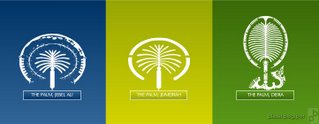
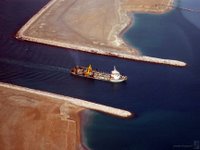
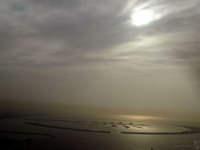
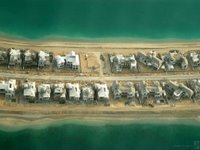

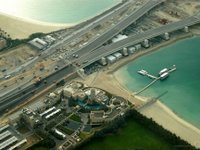
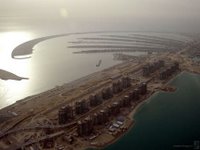

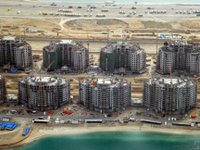
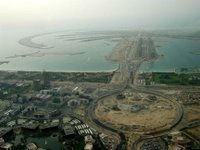
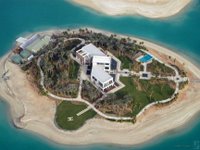
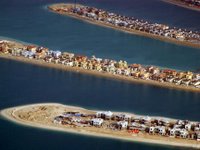
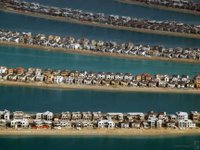
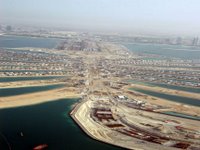
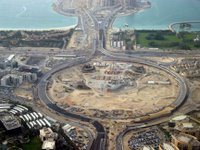
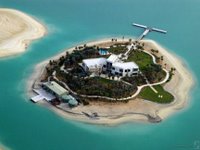
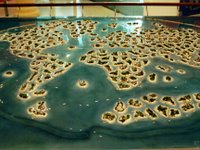
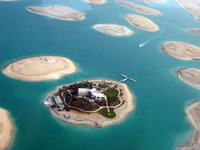
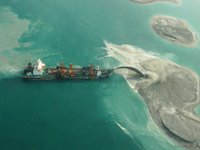
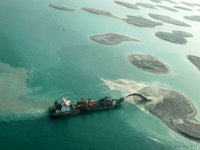
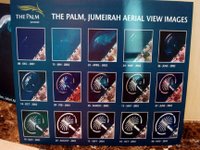
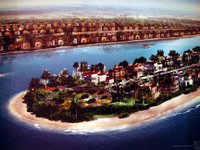
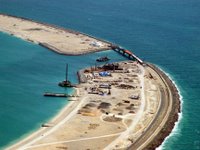
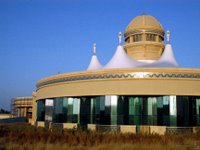
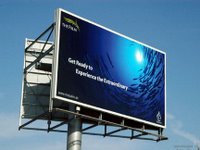
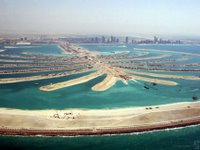
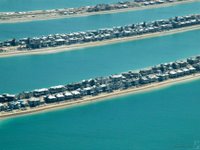
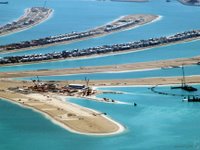
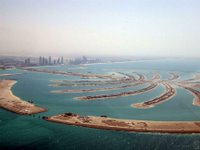
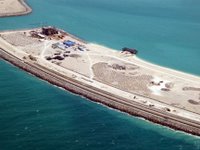
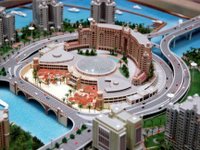
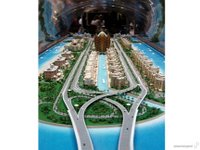
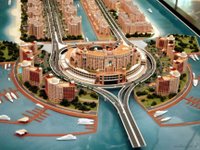
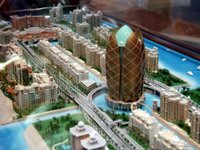
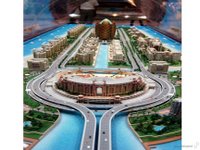
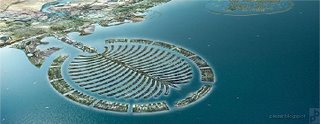
No comments:
Post a Comment